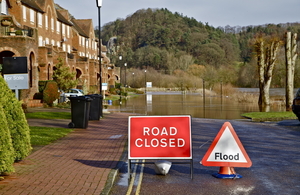El Museo de la Cancillería del Instituto Matías Romero de la Secretaría de Relaciones Exteriores presenta la exposición titulada “United by Friendship. Las Relaciones México – Reino Unido”, en el marco del Bicentenario de la Independencia de México.
La muestra conmemora los casi 200 años de relaciones diplomáticas, iniciadas en 1823 cuando el Reino Unido se convierte en la primera potencia europea en reconocer la Independencia de México, al iniciar las negociaciones que darían como resultado un Tratado de Amistad, Navegación y Comercio entre ambas naciones firmado en 1826 y ratificado en 1827.
La ceremonia de inauguración se llevó a cabo el 9 de septiembre, con la participación de la subsecretaria de Relaciones Exteriores, embajadora emérita Carmen Moreno Toscano, el participaron el embajador designado del Reino Unido en México, Jon Benjamin; el director general del Instituto Matías Romero, Alejandro Alday, y la curadora de la exposición, Veka Duncan.
Esta exposición es una colaboración entre el Instituto Matías Romero, a través del Museo de la Cancillería, y la Embajada Británica en México, y cuenta con la curaduría de la historiadora del arte Veka Duncan e investigación del historiador Horacio Acosta. En ella, se exhibirán objetos y documentos relevantes a los momentos más destacados de las relaciones diplomáticas y comerciales entre México y el Reino Unido.
Dentro de esta muestra, destaca un núcleo dedicado a las visitas de la Familia Real y primeros ministros británicos a México, así como de presidentes mexicanos al Reino Unido. En él, se resaltarán los logros compartidos resultado de dichas visitas. Entre las piezas y objetos a exhibir destacan tratados bilaterales, hemerografía, fotografías en gran formato y documentación relevante a cada evento.
Por último, la exposición también contará con un espacio para resaltar la historia y el legado de la comunidad británica en México.
“United by Friendship. Las Relaciones México – Reino Unido” cuenta con el valioso apoyo de Tecno Print, El Universal, Liverpool, el Acervo Histórico Diplomático de la Secretaría de Relaciones Exteriores, la Fototeca Nacional del Instituto Nacional de Antropología e Historia, y de la Secretaría de Cultura de la Ciudad de México a través del Archivo Histórico de la Ciudad de México.
pressandcomms.mexico@fco.gov.uk
Museo de la Cancillería
República de El Salvador 47, Colonia Centro, Cuauhtémoc, 06000 Ciudad de México
Horario: Lunes a sábado, 11 a 17 hrs.
La cartelera y las actividades adicionales pueden ser consultadas en la página de Facebook del Museo de la Cancillería.

